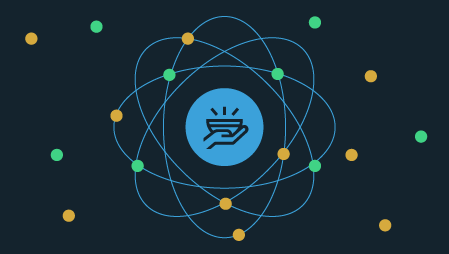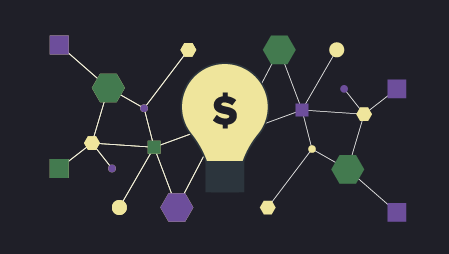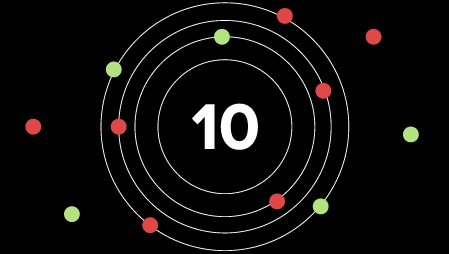Throughout history, we have had a healthy mix of members of society looking at technological advancements as a blessing, and others looking at it as a curse. These debates are instrumental in designing solutions that would advance our civilization towards a better future. The most prominent advancement in the 21st century is the Internet, and entering this millennium was not without its healthy share of speculations. It was even demonstrated in movies like Back to the Future, The Matrix, Terminator, Wall-E, and Iron Man, each giving their own views to promote this debate further. 20 years into this millennium, we continue this debate as to whether the Internet is good or bad for us. However, no one can deny the fact that we are much more connected, and to imagine a life without it, one does not need to look much further than the present with the COVID19 pandemic. Suddenly, upon the declaration of the pandemic, the distance was a mere number to talk about as international communities turned to services like Video Calls and eCommerce without hesitation to remain safe and sane. Many throughout the world combined efforts to bring data into the cloud so that experts could analyze trends and convert them to educational material that could be published to diminish the “curve”. The stock market recorded curves of its own, highlighting businesses that thrived and ones that suffered. If the pandemic had arrived without the internet, it is true that we would have seen the news through the TV, and our selfies would be arriving by post, but it could never replace the smile we can see when connecting instantly with a loved one or hunger we can satisfy with a few taps on the phone. The connected mobile devices in our hands are much like a musical instrument; in the hands of an amateur, it is mere noise disturbing everyone around them, but when in the hands of an expert, it is magic. Is having information literally at the tip of our fingers a blessing or a curse? That is the debate we are currently living in to build a better digital future.
While the first 20 years of this millennium has focused on bringing connectivity between humans and services, the mass-scale adoption of being connected to machines has only been a fantasy. In the latter half of the last decade, we saw an emergence of the Internet of Things as a natural evolution of the digital transformation, which expands our imagination further from connected humans and prototype robots to have an entire city or building’s infrastructure managed remotely through the cloud via our mobile devices. The dark side of this image has already been triggered by movies such as The Matrix and Terminator, but we must acknowledge that machines are built by humans, at least in the world that we live in today. It is, therefore, our imagination that we are programming into the machines… let’s take a look at a few examples to provoke the debate on the future with and without IoT.
Impact on Consumers:
As mentioned before, the Internet brings us closer together by connecting to each other and services through cloud-connected devices. Now, it is possible to have all electronics connected via the Internet of Things. One can now say, “Hey Google”, “Alexa”, or “Siri” and tell them to turn off a lamp in another room or change the color of the light to affect the mood. When at work, one can connect to their pets via their phone, and even throw them treats to engage them while they are waiting for you. When running, many want to record their performance via Fitbit to monitor progress and share with friends. For peace of mind, many have installed cameras around their houses, which are accessible via their mobile or desktop, and for those of us who tend to not remember, “did I lock my door”, or “did I turn off the stove”, they can immediately verify this via their connected devices… the list of marketed benefits for emerging connected products becomes longer every day.
If we recall the top three challenges of the first IoT solution, there are two challenges that consumers face these days: security, and the price of the IoT devices.
To address security first, governments are getting more and more involved in order to ensure that consumer privacy and security are respected. Regulatory bodies such as UL now assess products against IoT cybersecurity guidelines to provide further confidence to consumers, and regulations are being enforced by governments to make it easy for consumers to delete all stored data. The technological solution frequently evaluated is through a phenomenon called “Edge Computing”. This method allows Data Analytics or Machine Learning algorithms to calculate anomalies, and instead of sending all data to the cloud, it only submits alerts or reports of the predefined anomalies. The data, for instance, security footage can be stored locally on the Edge Computing device for a predefined time if the consumer wants to go find details of the reported incident.
Coming to cost, just like any other technology, the first introduction of technologies is always expensive because the mass manufacturing infrastructure has still not been established. Let us take PlayStation 3 as an example, which was a technological advancement in the gaming industry in 2006. Sony packed in many new technologies such as BlueRay, BlueTooth, WiFi connectivity, group gaming, connectivity of up to 7 controllers, and many other items on the list. The first devices were expensive, and then Sony not only refined the features they wanted to keep based on consumer feedback, but their support structure (component manufacturers) was also able to ramp up their production capacities in order to be able to produce more at the same price. Another example is mobile devices, where the component infrastructure had to emerge to be able to reduce the cost and increase the capacity of compact components required by this new industry for mass adoption. IoT is following a similar trend. Recently, many new lower-cost, lower-performance chips have emerged in the market to facilitate the price points for mass adoption. Moreover, telecom companies have invested in CAT-M wireless networks, specifically designed for lower bandwidth and lower cost needs of IoT solutions, while major cloud service providers have made IoT specific services available. It is only a matter of time that the support structure stabilizes performance versus cost position of the market to trigger an IoT mass adoption.
All that said, the question is, “why would a consumer risk security and pay higher prices for IoT devices”? The answer is simple…have peace of mind by being connected to the electronics in order to drive better focus on the activities they want to do.
Impact on Businesses:
With the emergence of the Internet, and hence, the Internet of Things, more and more businesses have moved over from a product to a services business model. Rather than trying to anticipate quarterly and annual demands, signing up users for a recurring service cost brings more predictability into the financial health of a business, which, in turn, attracts investors. Given the service cost does not change much year after year despite the growing appetite for innovation by the consumers, the businesses are presented with a newfound challenge to improve the bottom line and sustain the loyal and steady customer base.
Businesses looking to enter the IoT industry, therefore, face innovation challenges from two different angles. 1) Connectivity to the consumers to drive the top line, and 2) Automation at the factories to drive the bottom line.
The top line:
The beauty of the IoT is that it connects these businesses directly to the consumers via their connected devices; a possibility that they did not have before, and had to count on feedback via prototypes, surveys, and focus group discussions. Having a tight feedback loop via IoT devices is irreplaceable in the product development world as it drives brand loyalty while accelerating product evolution. In the technical world, this is called UX (User Experience) and UI (User Interface) design. The perfect product for comparison is a mobile device. Once the right investment into the hardware is complete, there is flexibility within the upgradeability of the software to continue building on the User Experience and refine specifications for future devices. Similarly, a simple device like thermostat provisions for upcoming technology upgrades to engage the user into an immersive experience in combination with the parent company’s intelligent home management application. On the other hand, UX is only the tip of the iceberg. To drive the bottom line, there are mechanisms set up to convert the rapidly gathered data from the field into KPIs that can be used to either build new customer experiences or to improve product design and production.
The bottom line:
Factories associated with the IoT are often following Industry 4.0 principles, or in simpler terms, intelligent factories, which carry the “Connected” aspect to manufacturing, driven by automation, data analytics, and machine learning. However, developing and sustaining these massive initiatives comes with a hefty price tag as investments need to be split up and focused on customers or on operations. This has given way to a new business model called “Contract Manufacturing”, or CM. These are companies that focus mainly on operations, i.e., supply chain and manufacturing management offering a unique value proposition to their customer-facing business partners to focus on what their customers need while entrusting the manufacturing and component procurement worries to the operational partners.
Now, the question becomes, why do companies want to invest so much into upgrading their products and factories? The answer is that it is a must or else the business will not survive. With the growing thirst of consumers for new experiences at low prices, connectivity to the phone is a must. With the growing cost pressures despite bulging labour rates and raw material costs, it is imperative to invest in automation to improve throughput and reduce waste due to quality. With IoT driving a recurring revenue stream on the top line, and Industry 4.0 optimizing cost at the bottom line, the increase in profit is rapidly reinvested by these businesses into driving further innovation to maintain their competitive edge. Businesses that do not invest in automation are already being challenged by reduced capital to be able to keep up with the growing thirst of consumers for innovative experiences.
Impact on Governments
Successful governments have a healthy mix of consumers and businesses within their jurisdictions; therefore, the evolution of consumers and businesses due to IoT already influences the local economy and regulations. This has allowed governments to focus on a more underlying issue for our society: rebuilding a sustainable future for generations to come. The COVID19 lockdown fueled this need further as many saw animals emerge outside of their confined areas, while many metropolitans around the world were able to see a clear new sky that they had long forgotten due to smog being accumulated for decades.
These government initiatives gave way to provincial and municipal governments to provide initiatives for both businesses and consumers to strive towards a healthier, more sustainable and connected future. Whether it is initiatives to upgrade light bulbs, thermostats, or providing special privileges to zero-emission cars, governments are providing financial and comfort initiatives to build healthier and environmentally friendly habits for their citizens. Furthermore, many major cities have already made significant moves towards claiming intelligent cities requiring advancement in IoT solutions to build a more engaging experience for their citizens.
As much as governments are investing in building healthier consumer behaviour, it is equally an opportunity for businesses to build products and services to fulfil the market that is being created. This has provoked many major businesses to make commitments towards ESG (Environment, Safety, Governance) sustainability goals. Whether it is reducing food waste in offices, optimizing engines for lower CO2 emissions, or upgrading HVAC systems, IoT has not only provided connectivity to devices but has provided access to Big Data to put our learning curve on an exponential path.
So, why would governments invest in such initiatives? Well, not only does invest in innovative technology create more jobs that influence the economy, but it also creates a new sustainable experience that helps the local community grow. Moreover, the IoT is often synonymous with the word Big Data, which fuels our human learning capacity. Therefore, whether it’s new university research programs, new startups, or incentives for major organizations, such initiatives not only fuel the technology industry, but they have a profound impact on other industries that surround the city such as tourism, restaurants, festivals etc.
In summary, IoT offers us endless possibilities to first imagine and then build. During these early stages of this technology adoption, healthy debates can help us talk through what is good and bad in order to trust the rule of “survival of the fittest”, and this will lead us to the best future for all. In conclusion, life, as we knew it 20 years ago at the start of the millennium, has evolved, and with it, so must our debates of a better future. New movies need to be made to continue this healthy debate…the evolution of mankind in a connected future.





